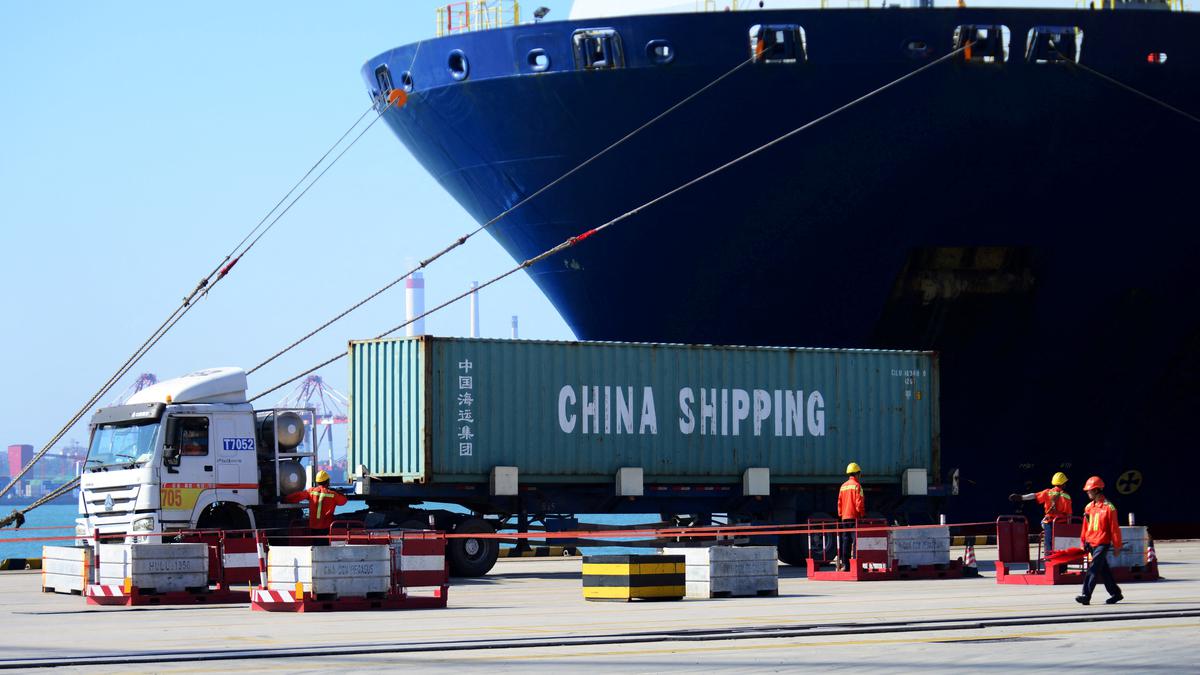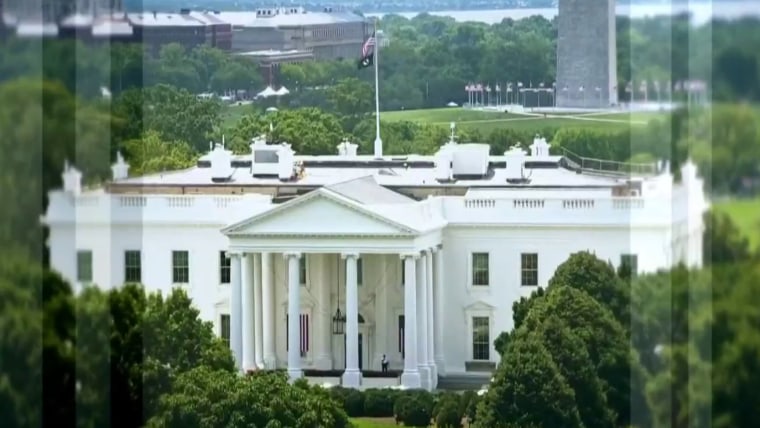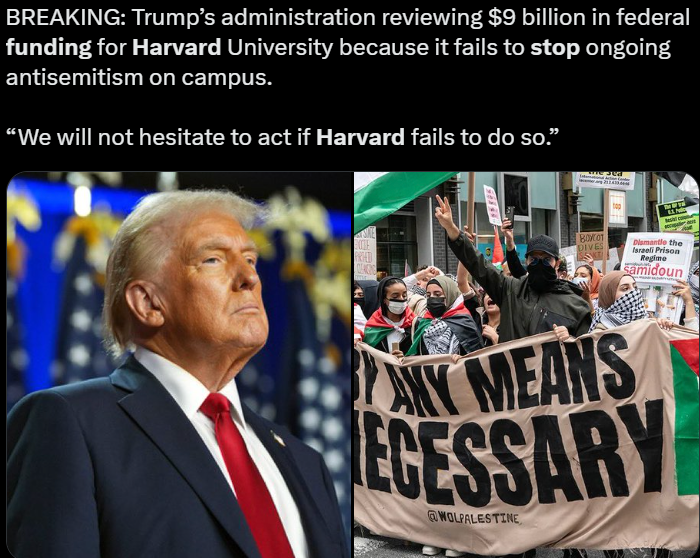How Tariffs Threaten China's Export-Led Growth Model

Table of Contents
Reduced Export Demand and Market Share
Tariffs directly increase the price of Chinese goods in international markets, making them less competitive against producers in tariff-free regions or countries with lower production costs. This leads to a decrease in demand for Chinese manufactured goods, forcing Chinese businesses to lower prices, reduce profits, or both. This price increase diminishes China's competitiveness in the global marketplace.
- Decreased demand for Chinese manufactured goods: Tariffs effectively shrink the market for Chinese exports, forcing companies to contend with reduced sales volumes.
- Loss of market share to competitors in tariff-free regions: Businesses in countries not subject to these tariffs gain a significant competitive advantage, often capturing market share previously held by Chinese exporters. This is particularly true in sectors like textiles and electronics, which have been heavily targeted by trade restrictions.
- Impact on specific sectors heavily reliant on exports (e.g., textiles, electronics): Industries heavily reliant on exports, such as textiles, electronics, and furniture, are disproportionately affected. The imposition of tariffs on these goods has led to significant job losses and factory closures in some regions of China.
- Examples of specific tariffs and their impact on Chinese exports: The US-China trade war, for instance, saw significant tariffs imposed on various Chinese goods, resulting in a notable decline in bilateral trade and a shift in global supply chains. Data from the World Trade Organization (WTO) show a clear correlation between tariff increases and reductions in Chinese export volumes. The Peterson Institute for International Economics provides further detailed analysis of these impacts.
The ripple effect extends throughout the Chinese economy. Reduced export demand translates to decreased production, impacting related industries like logistics, transportation, and raw material suppliers.
Supply Chain Disruptions and Increased Costs
Tariffs don't just affect the price of finished goods; they disrupt global supply chains, impacting both the import of raw materials and the export of finished goods. This added complexity and uncertainty increase costs for Chinese manufacturers and negatively affect their profitability.
- Increased costs of raw materials for Chinese manufacturers: Tariffs on imported raw materials increase production costs, squeezing profit margins for Chinese manufacturers.
- Logistical challenges and delays in shipping: Navigating complex tariff regulations adds layers of bureaucracy and logistical hurdles, leading to delays and increased shipping costs.
- Higher production costs leading to reduced profit margins: The combined effects of increased raw material costs and logistical complexities significantly reduce profit margins, forcing businesses to cut costs or increase prices, further diminishing competitiveness.
- Potential relocation of factories to avoid tariffs: Some Chinese manufacturers are relocating their factories to countries with preferential trade agreements or lower tariffs to avoid the increased costs and complexities associated with exporting from China.
The impact on small and medium-sized enterprises (SMEs) in China is particularly acute. SMEs often lack the resources and scale to navigate complex trade regulations and absorb increased costs as efficiently as larger corporations. The instability created by trade wars further exacerbates these challenges.
Impact on Employment and Economic Growth
China's export-led growth model has been a major engine for job creation. Reduced exports directly translate to job losses in export-oriented industries, potentially triggering wider economic instability.
- Job losses in export-oriented industries: As export demand falls, businesses are forced to reduce their workforce, leading to job losses across various sectors.
- Reduced economic growth due to decreased exports: A significant contraction in exports inevitably leads to a slowdown in overall economic growth, impacting the government's ability to fund social programs and infrastructure projects.
- Impact on wages and income levels: Job losses and reduced economic activity translate to lower wages and decreased income levels for many Chinese workers, potentially exacerbating existing inequalities.
- Potential social unrest as a result of economic hardship: Widespread job losses and reduced income levels can create social unrest and instability.
The Chinese government has implemented various measures to mitigate these negative impacts, including fiscal stimulus packages and initiatives to support affected industries. However, the long-term effects of persistent tariffs on employment and economic growth remain a significant concern. Diversifying the economy away from over-reliance on exports is becoming increasingly crucial.
The Search for Alternative Growth Models
China is actively pursuing a transition towards a more domestically-driven growth model to lessen its dependence on exports and mitigate the impact of tariffs. This transition involves significant challenges but also presents opportunities.
- Increased investment in domestic consumption: Stimulating domestic demand is crucial to offsetting the decline in export-led growth. This involves policies aimed at boosting consumer spending and increasing disposable incomes.
- Development of advanced technologies and innovation: Investing in research and development, technological innovation, and higher value-added manufacturing can help China compete in the global market with less reliance on price competitiveness.
- Focus on higher value-added manufacturing: Shifting towards higher value-added manufacturing and services can help improve profit margins and reduce vulnerability to price competition from lower-cost producers.
- Strengthening of domestic supply chains: Reducing reliance on foreign suppliers by strengthening domestic supply chains can enhance resilience against external shocks, such as tariffs and trade wars.
This transition, however, faces substantial challenges, including overcoming existing infrastructure limitations, fostering innovation, and managing the social and economic consequences of shifting employment patterns. Regional trade agreements, such as the Regional Comprehensive Economic Partnership (RCEP), offer a partial counterbalance to the negative impact of global tariffs by creating alternative markets and strengthening regional integration.
Conclusion
Tariffs significantly threaten China's export-led growth model by reducing export demand, disrupting supply chains, and impacting employment and economic growth. The consequences are far-reaching, affecting not only Chinese businesses but also the global economy. Understanding these threats is crucial for businesses and policymakers alike. China's efforts to diversify its economy and transition towards a more domestically driven growth model, while challenging, are essential for its future economic prosperity. Further research and proactive strategies are needed to navigate this complex landscape and ensure continued economic stability. Learn more about the challenges facing China's export-led growth model and the implications for the global economy.

Featured Posts
-
 How Tariffs Threaten Chinas Export Led Growth Model
Apr 22, 2025
How Tariffs Threaten Chinas Export Led Growth Model
Apr 22, 2025 -
 Secret Service Closes White House Cocaine Investigation
Apr 22, 2025
Secret Service Closes White House Cocaine Investigation
Apr 22, 2025 -
 1 Billion Harvard Funding At Risk Exclusive Insight Into Trump Administrations Ire
Apr 22, 2025
1 Billion Harvard Funding At Risk Exclusive Insight Into Trump Administrations Ire
Apr 22, 2025 -
 Why Robots Struggle To Produce Nike Shoes A Technological Deep Dive
Apr 22, 2025
Why Robots Struggle To Produce Nike Shoes A Technological Deep Dive
Apr 22, 2025 -
 Land Your Dream Job 5 Dos And Don Ts In The Private Credit Sector
Apr 22, 2025
Land Your Dream Job 5 Dos And Don Ts In The Private Credit Sector
Apr 22, 2025
